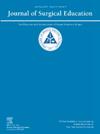The “M” Word: Defining Malignancy in Surgical Residencies
IF 2.1
3区 医学
Q1 EDUCATION, SCIENTIFIC DISCIPLINES
引用次数: 0
Abstract
Objective
We sought to define the term “malignancy” in the setting of medical students applying to general surgery residencies.
Design
This was a retrospective qualitative analysis of Reddit.com’s yearly General Surgery Match Application spreadsheets. Programs were marked as malignant (Y), nonmalignant (N), and Mixed (Y/N). A code book was developed and responses coded. Thematic and pattern analysis was performed.
Results
We found malignancy could be broken into program and people factors. Program factors included: duty hours and violations, resident workload, resident training and education, resident autonomy, program hierarchy, and benefits. People factors included people from all levels in a program and included: instances of a toxic work culture, attending teaching, and resident cohesion. The label of malignancy caries significant impacts for both programs and residents like decreased amount of applicants, residents leaving programs early, or legal/administrative troubles.
Conclusions
Despite implementation of duty hour restrictions and abuse reporting systems, general surgery residencies are still noted to have issues with breaking hours and emotional, mental, and physical abuse. These characteristics have been complied under the umbrella term, “malignancy.” Malignant residencies have program wide factors, as well as individual people factors that contribute to malignancy.
“M”字:外科住院医师中恶性肿瘤的定义
目的我们试图在医学生申请普通外科住院医师时定义“恶性肿瘤”一词。这是对Reddit.com年度普外科匹配应用电子表格的回顾性定性分析。程序被标记为恶性(Y)、非恶性(N)和混合(Y/N)。开发了一个密码本,并对响应进行了编码。进行了主题和模式分析。结果发现恶性肿瘤可分为程序因素和人因素。项目因素包括:值班时间和违规行为、住院医师工作量、住院医师培训和教育、住院医师自主权、项目层级和福利。人员因素包括项目中各个层次的人员,包括:有毒的工作文化、参加教学和居民凝聚力。恶性肿瘤的标签对项目和住院医生都有重大影响,比如申请人数减少,住院医生提前离开项目,或者法律/行政麻烦。结论:尽管实施了值班时间限制和虐待报告制度,普通外科住院医师仍然注意到有休息时间和情感、精神和身体虐待的问题。这些特征被统称为“恶性”。恶性住院医师有项目范围的因素,也有个人因素导致恶性肿瘤。
本文章由计算机程序翻译,如有差异,请以英文原文为准。
求助全文
约1分钟内获得全文
求助全文
来源期刊

Journal of Surgical Education
EDUCATION, SCIENTIFIC DISCIPLINES-SURGERY
CiteScore
5.60
自引率
10.30%
发文量
261
审稿时长
48 days
期刊介绍:
The Journal of Surgical Education (JSE) is dedicated to advancing the field of surgical education through original research. The journal publishes research articles in all surgical disciplines on topics relative to the education of surgical students, residents, and fellows, as well as practicing surgeons. Our readers look to JSE for timely, innovative research findings from the international surgical education community. As the official journal of the Association of Program Directors in Surgery (APDS), JSE publishes the proceedings of the annual APDS meeting held during Surgery Education Week.
 求助内容:
求助内容: 应助结果提醒方式:
应助结果提醒方式:


